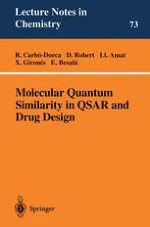2000 | Buch
Molecular Quantum Similarity in QSAR and Drug Design
verfasst von: Ramon Carbó-Dorca, David Robert, Lluís Amat, Xavier Gironés, Emili Besalú
Verlag: Springer Berlin Heidelberg
Buchreihe : Lecture Notes in Chemistry
Enthalten in: Professional Book Archive
